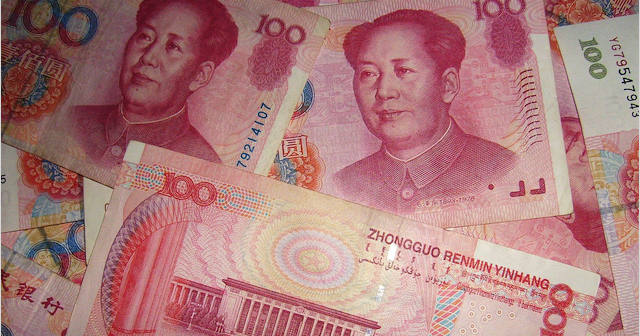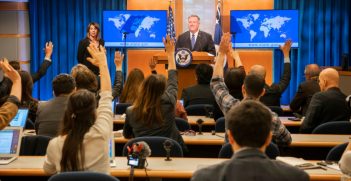Capturing the Benefits of Chinese Investment

Chinese investment has increased from virtually zero to becoming Australia’s fifth-largest source of foreign direct investment over the past decade. Chinese investment has grown with the spectacular rise of the Chinese economy, and is just the latest wave of Asian foreign investment to chase commercial opportunities in Australia, initially in resources, property, infrastructure and agriculture.
Australia is a country that needs capital. Its small population inhabits a vast continent and relies on foreign investors to help develop mines, set up factories, and build ports, roads and other infrastructure. Foreign direct investment boosts productivity by bringing access to innovative technologies, global value chains, and new business know-how. Foreign bidders ensure that Australians realise the full international value of their assets. Today, China is one of the world’s top-three largest sources of foreign direct investment.
Back in the 1980s, when China was still a small economy, it didn’t seem to matter that Australia was host to the largest Chinese foreign direct investments anywhere in the world — the Channar-Rio and Alcoa joint ventures — from Chinese enterprises that were owned directly by Chinese state ministries. But now it appears to look differently.
China is a big economy. It has a political system that is non-democratic. It is perceived as a potential strategic competitor to the United States. Although China is recognised by Australia as conforming to the international rules of a ‘market economy’, SOEs remain a feature of its industrial landscape and are prominent investors abroad. Even though most SOEs operate in intensely competitive markets and are remote from the intervention of the Chinese government, some still worry that Chinese firms, state-owned or private, are agents of the Chinese government.
These sentiments are a factor in the current Senate inquiry into the foreign investment review framework regarding ‘Australian assets of strategic or national significance’. Its terms of reference mention three recent investments as worthy of particular scrutiny, all involving Chinese bidders — the leasing of the Port of Darwin to the Landbridge Group; the Treasurer’s decision to block Chinese bidders’ proposed purchase structures for S. Kidman & Co; and the leasing of TransGrid, for which the China State Grid bid unsuccessfully.
Public opinion has always been ambivalent about foreign investment, and anxiety has risen during surges of investment from new sources. The Foreign Investment Review Board (FIRB) was established in the 1970s to allay popular concerns about investment from the United States. The Treasurer was given the power to prevent foreign investment that is judged ‘contrary to the national interest’. While community worries over US investment have subsided, they were subsequently reawakened first by Japanese and now Chinese investment. The FIRB has been an effective instrument for reviewing and managing these apprehensions, although the foreign investment policy guidelines and, last year, the legal framework have been updated in response to them.
This Senate inquiry is timely because the Australian foreign investment review framework bears re-examination in light of recent politically motivated changes to the regime as well as supra-cyclical sensitivities about Chinese investment. While the ‘national interest test’ is a benign instrument when sources of investment are steady, anxiety about unfamiliar investors makes the regime more susceptible to political risk and raises its economic cost.
The framework has also been progressively undermined by preferential concessions to free-trade agreement partners, which have the effect of introducing discrimination against particular sources of capital. Such distortions are without basis in economic logic. Foreign investment policy that is perceived to be conducted in a reactive manner imposes additional uncertainty on particular investors and is equivalent to a higher corporate tax rate on foreign capital.
Foreign investment is a driver of national prosperity rather than a peril to national security. It makes Australia stronger, not weaker. All foreign investments must comply with Australia’s robust domestic legal frameworks. Some of Australia’s major competitors in international capital markets, such as the United Kingdom, do not have a foreign investment screening regime. They rely entirely on national regulatory and policing regimes to manage foreign and domestic investment alike.
It makes sense for Australia to move its foreign investment review framework in this direction, opening opportunities while still being able to counter threats. Indeed, the Australian government already deters foreign investors from non-commercial behaviour through its domestic security and intelligence powers to investigate and intervene in specific asset operations that threaten national security. Addressing weaknesses in domestic laws and institutions is the best protection against such concerns about foreign (or domestic) investment.
Australia’s foreign investment regime should evolve on the principle of eliminating nationality-based discrimination. If there is a screening threshold, it should be common to all private investment. The regime should recognise that SOE investment is predominantly profit-driven, by allowing SOEs to access higher screening thresholds if they pass a regulatory process of ‘historical accreditation’ that proves their commercial credentials. And it should move from an ‘application and review’ to a ‘notification and compliance’ system — whereby investors notify the FIRB of their plans and commit to complying with Australia’s legal frameworks, rather than having to always gain prior approval.
The regime should also forge a consistent national approach to foreign investment in significant Australian infrastructure assets by institutionalising collaboration between different levels and departments of government. The Critical Infrastructure Advisory Council, for example, is inadequate unless it is expanded to include the Treasury and state and territory governments.
There is bipartisan interest in improving and depoliticising the foreign investment review framework, because it conflicts both major parties equally when in government.
Peter Drysdale AO FAIIA is Emeritus Professor and the Head of the East Asian Bureau of Economic Research at the Australian National University. Neil Thomas is a researcher at the East Asian Bureau of Economic Research. This article originally appeared on East Asia Forum on 13 March. It is republished with permission.





